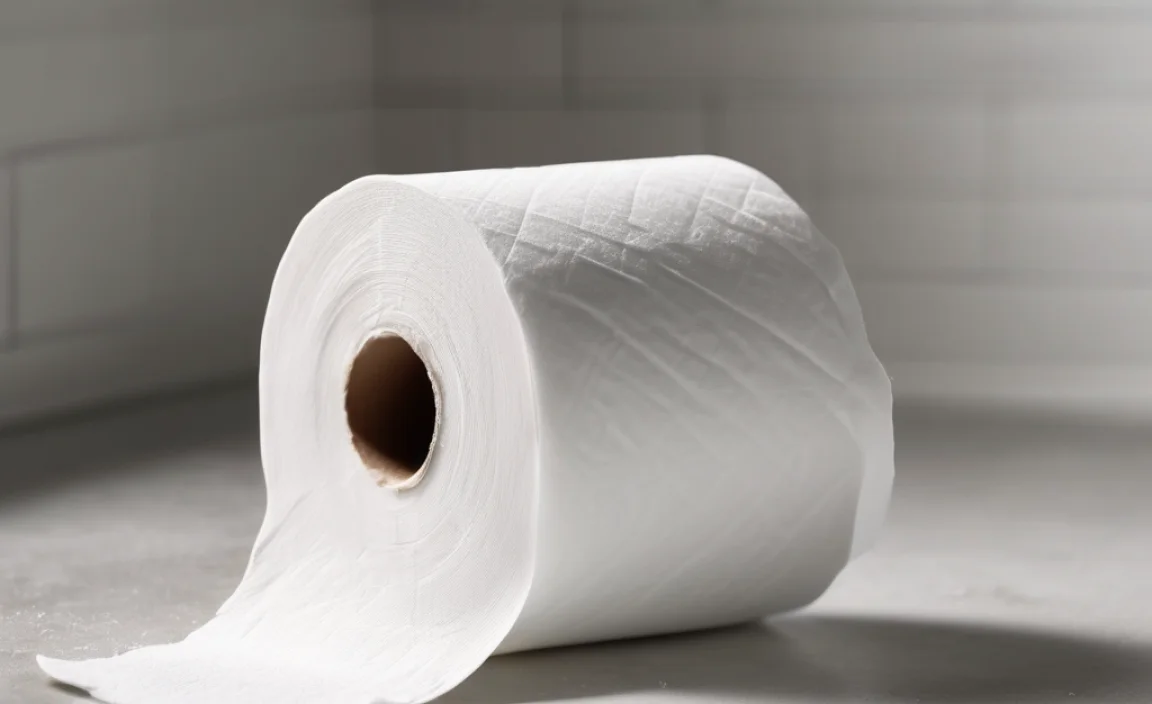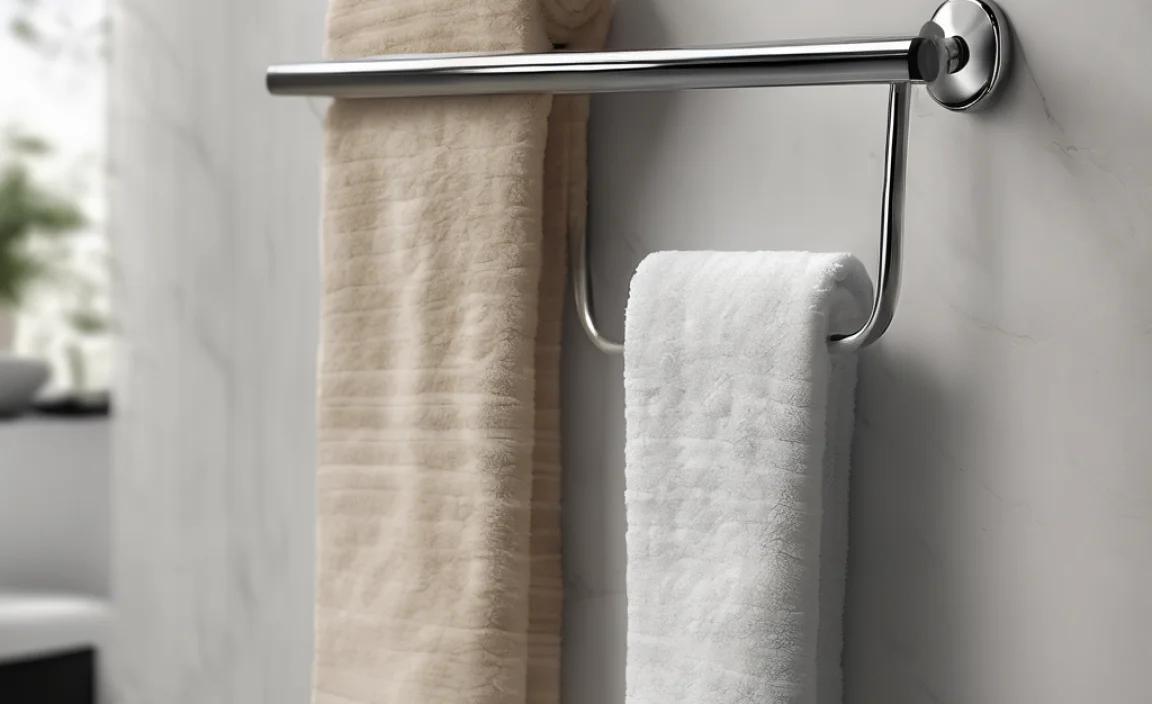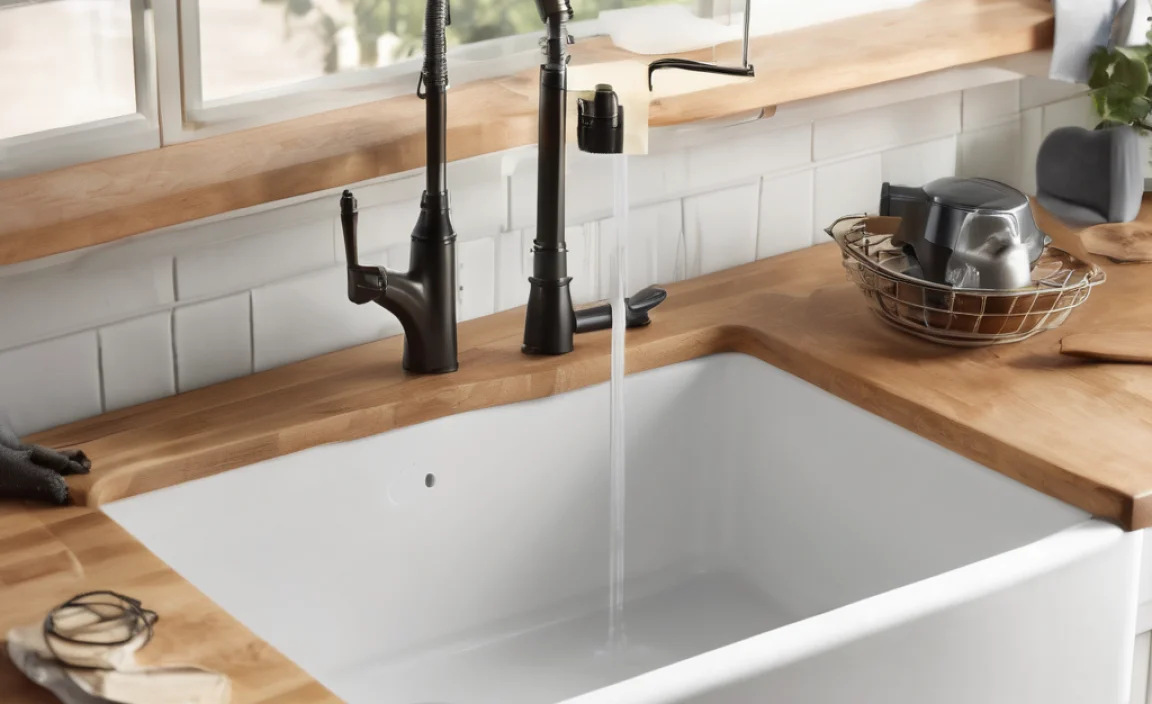Quick Summary: Got a bathtub that’s draining slow? Don’t stress! You can usually unclog it yourself without calling a plumber. Start by removing any visible hair or debris. Then, try pouring boiling water down the drain. If that doesn’t work, use a plunger or a bent wire hanger. For stubborn clogs, baking soda and vinegar can do the trick. Always be gentle to avoid damaging your pipes!
Is your bathtub water taking forever to drain? You’re not alone! A slow or stopped drain is a super common problem. Hair, soap scum, and other gunk love to build up in our pipes. It’s annoying, but don’t worry! You can often fix this yourself with things you already have at home.
This guide will walk you through simple, step-by-step methods to unclog your bathtub. We’ll start with the easiest solutions and move on to tougher ones if needed. Get ready to say goodbye to that frustrating slow drain!
Tools and Materials You Might Need

Before you start, gather these items. You probably have most of them already!
- Rubber gloves
- Boiling water
- Plunger (a cup plunger works best)
- Baking soda
- Vinegar
- Bent wire hanger or pliers
- Screwdriver (for drain cover removal)
- Bucket or container
- Old toothbrush
Step-by-Step: How to Unclog Your Bathtub
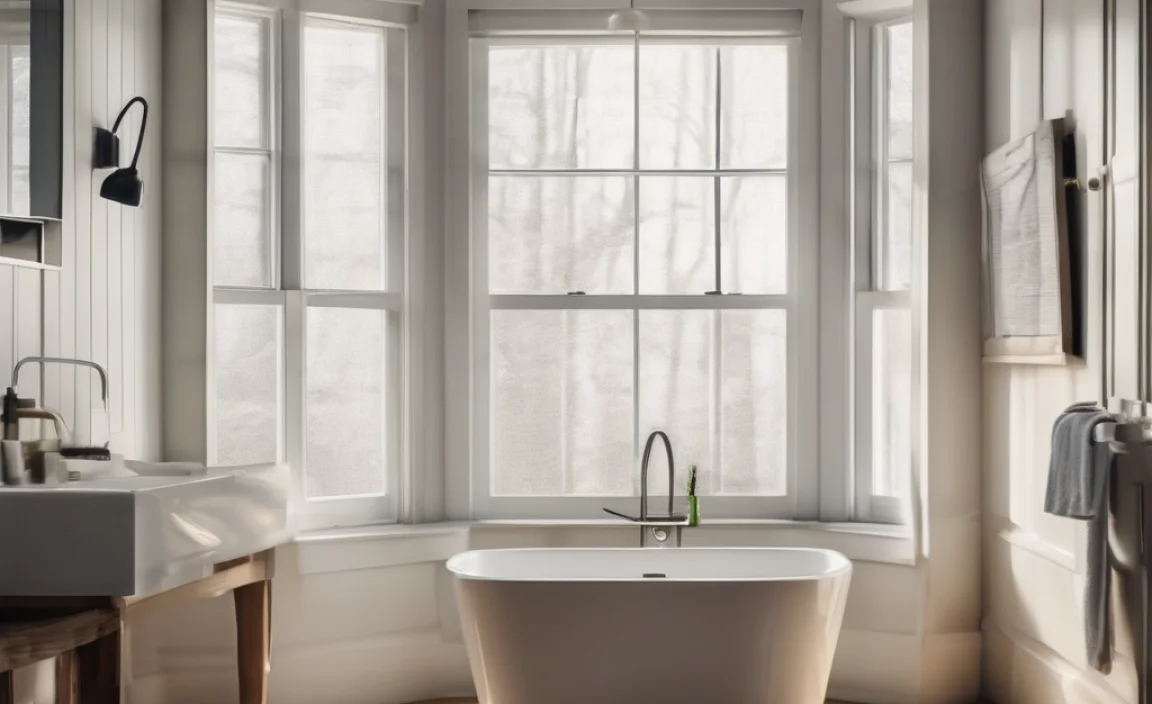
Ready to get that tub draining smoothly again? Follow these steps. Start with the first method and work your way down until the clog is gone.
Step 1: Remove Visible Debris
This is the easiest first step. Often, the clog is right there on the surface!
- Put on your rubber gloves.
- Look around the drain opening and remove any visible hair, soap scum, or other debris.
- Use your fingers or tweezers to grab the gunk. A bent wire hanger can also help.
- Dispose of the debris in the trash.
Step 2: Flush with Boiling Water
Hot water can dissolve some clogs, especially those made of soap or grease.
- Carefully boil a kettle or pot of water.
- Slowly pour the boiling water down the drain. Be careful not to splash yourself!
- Wait a few minutes to see if the water drains.
- Repeat if necessary.
Important: Don’t use boiling water if you have PVC pipes. The heat can damage them. If you’re not sure what kind of pipes you have, skip this step.
Step 3: Plunge the Drain
Plunging creates suction to dislodge the clog.
- Make sure there’s enough water in the tub to cover the cup of the plunger. If needed, add some water.
- Place the plunger over the drain opening, making sure to create a good seal.
- Push and pull the plunger up and down vigorously for several minutes.
- Remove the plunger and see if the water drains.
- Repeat if necessary.
Step 4: Baking Soda and Vinegar
This is a natural and effective way to break down clogs.
- Pour one cup of baking soda down the drain.
- Follow with one cup of vinegar.
- Let the mixture fizz for 30 minutes.
- Flush with hot water.
The baking soda and vinegar create a chemical reaction that can dissolve hair and other gunk.
Step 5: The Wire Hanger Method
A bent wire hanger can reach into the drain and pull out the clog.
- Straighten a wire coat hanger as much as possible.
- Bend one end to create a small hook.
- Carefully insert the hook into the drain opening.
- Fish around to try and grab the clog.
- Pull out the hanger, along with any debris.
- Dispose of the debris in the trash.
- Flush the drain with hot water.
Step 6: Clean the Drain Stopper
Sometimes the clog is stuck to the drain stopper itself.
- Remove the drain stopper. The method for removing it varies depending on the type of stopper. Some stoppers lift straight out, while others need to be unscrewed or pried out.
- Clean the stopper with an old toothbrush and some soap.
- Remove any hair or debris that is stuck to the stopper.
- Reinstall the stopper.
Step 7: Check the Overflow Drain
The overflow drain is the small opening near the top of the tub. It can also get clogged.
- Remove the overflow plate (usually held in place by screws).
- Insert a wire hanger or a drain snake into the overflow drain.
- Fish around to try and grab any debris.
- Pull out the hanger or snake, along with any debris.
- Reinstall the overflow plate.
Step 8: Remove and Clean the Drain Assembly (Advanced)
If none of the above methods work, the clog may be deeper in the drainpipe. This step involves removing the drain assembly, which is a bit more complicated.
- Place a bucket under the drainpipe to catch any water.
- Use a wrench to loosen the slip nuts that connect the drainpipe to the drain assembly.
- Carefully remove the drainpipe.
- Inspect the drain assembly for any clogs.
- Remove any debris that you find.
- Clean the drain assembly with a brush and some soap.
- Reinstall the drain assembly.
- Tighten the slip nuts.
- Run water to check for leaks.
Tips for Preventing Future Clogs
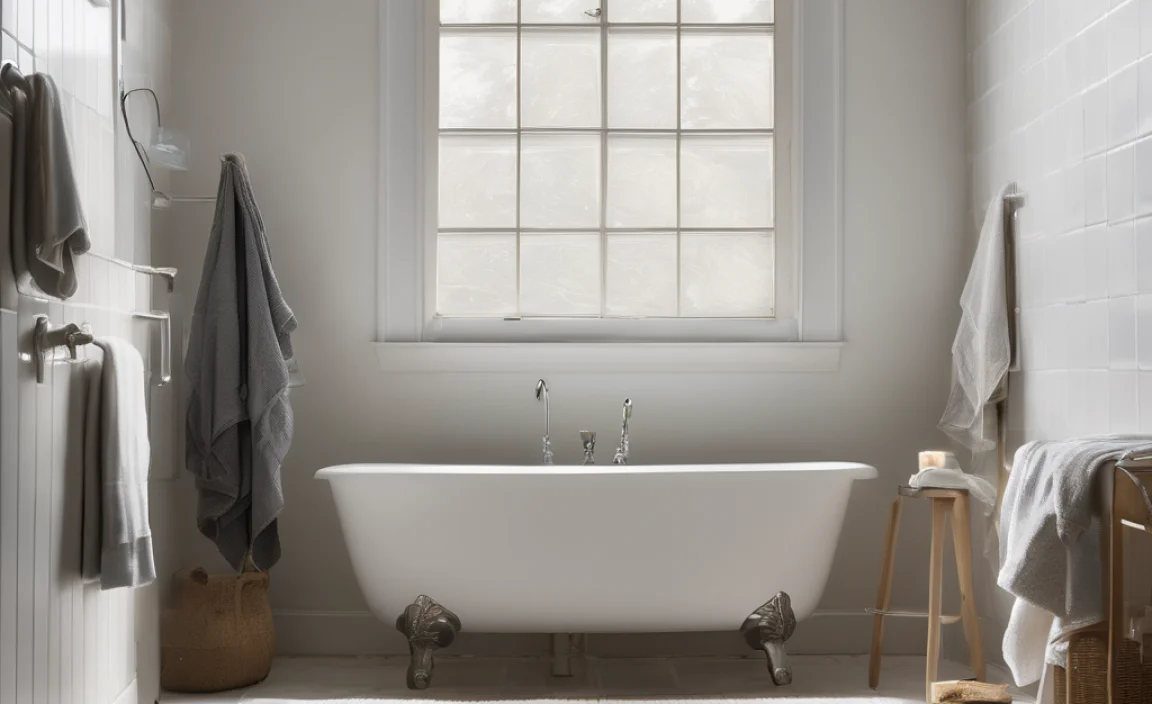
Here are some simple things you can do to keep your bathtub drain clear:
- Use a drain strainer to catch hair and debris.
- Pour boiling water down the drain once a week.
- Avoid pouring oil or grease down the drain.
- Regularly clean your drain stopper.
When to Call a Plumber
If you’ve tried all of the above methods and your bathtub is still clogged, it’s time to call a plumber. There may be a more serious problem, such as a blockage in the main drain line. A professional plumber has the tools and expertise to diagnose and fix the problem.
Understanding Drain Types
Bathtub drains come in various designs, each with its own removal method. Knowing your drain type helps when cleaning or unclogging.
- Lift-and-Turn Drain: These have a knob on top that you twist to open or close the drain. To remove, twist the knob until loose, then lift the entire stopper out.
- Push-Button Drain: Press the button to close, press again to open. Removal often involves unscrewing the stopper after accessing it through the overflow plate.
- Pop-Up Drain: Operated by a lever on the overflow plate. Removing requires detaching the linkage behind the tub wall, accessible via the overflow plate.
- Toe-Touch Drain: Tap with your toe to open and close. Often screws out after wiggling it to loosen.
- Trip-Lever Drain: Uses a lever on the overflow plate to raise and lower the stopper. The stopper is connected to a linkage that can be accessed through the overflow plate.
Troubleshooting Common Bathtub Drain Problems
Sometimes, unclogging a bathtub isn’t straightforward. Here’s how to handle some common issues:
- Slow draining after unclogging: There might be residual buildup. Repeat the baking soda and vinegar treatment or use a drain cleaner.
- Plunger not creating suction: Ensure there’s enough water to cover the plunger cup and that the cup is fully submerged. Apply petroleum jelly to the rim for a better seal.
- Wire hanger not reaching the clog: A longer tool like a plumber’s snake might be necessary.
- Drain stopper stuck: Try applying penetrating oil around the base of the stopper to loosen it.
DIY vs. Professional Plumber: A Comparison
Deciding whether to tackle a clogged bathtub drain yourself or call a plumber depends on the severity of the problem and your comfort level. Here’s a comparison to help you decide:
| Factor | DIY | Professional Plumber |
|---|---|---|
| Cost | Low (cost of materials like baking soda, vinegar, or a plunger) | High (hourly rate plus cost of parts) |
| Time | Can be time-consuming, especially if the clog is stubborn | Generally faster and more efficient |
| Expertise | Requires basic knowledge of plumbing and DIY skills | Professional expertise and experience |
| Tools | Uses common household tools | Specialized tools and equipment |
| Severity of Clog | Suitable for minor clogs caused by hair, soap scum, or minor debris | Recommended for severe clogs, recurring issues, or potential plumbing problems |
| Risk | Low risk of damage if proper techniques are followed | Minimal risk of damage due to expertise and experience |
Natural vs. Chemical Drain Cleaners
When dealing with a clogged bathtub drain, you have the option of using natural or chemical drain cleaners. Here’s a comparison:
| Factor | Natural Drain Cleaners | Chemical Drain Cleaners |
|---|---|---|
| Effectiveness | Effective for minor clogs and maintenance | Highly effective for tough clogs |
| Environmental Impact | Environmentally friendly and biodegradable | Harmful to the environment and can contaminate water sources |
| Safety | Safe for pipes and plumbing systems | Can corrode pipes and cause damage |
| Cost | Inexpensive and readily available | More expensive than natural alternatives |
| Health Risks | Low health risks, safe for use around children and pets | Can cause skin and eye irritation, respiratory problems, and chemical burns |
Examples of natural drain cleaners include baking soda and vinegar, boiling water, and enzyme-based cleaners. Chemical drain cleaners typically contain harsh chemicals like sodium hydroxide or sulfuric acid.
The Science Behind Clogs
Understanding what causes bathtub clogs can help you prevent them in the future. Here’s a look at the science behind common clog culprits:
- Hair: Hair is a major contributor to bathtub clogs. It tends to bind together and trap other debris, forming a solid mass that obstructs water flow.
- Soap Scum: Soap scum is a residue formed when soap reacts with hard water minerals like calcium and magnesium. It sticks to the walls of the drainpipe, gradually narrowing the passage and trapping debris.
- Oil and Grease: Oil and grease solidify as they cool, coating the drainpipe and attracting debris. Over time, this buildup can create a stubborn clog.
- Mineral Buildup: Hard water can also lead to mineral buildup in drainpipes, reducing water flow and creating a breeding ground for clogs.
Tools of the Trade: Plungers vs. Drain Snakes
When it comes to unclogging bathtub drains, plungers and drain snakes are two essential tools. Here’s a comparison of their pros and cons:
| Tool | Pros | Cons |
|---|---|---|
| Plunger |
|
|
| Drain Snake |
|
|
A plunger is best for clogs that are close to the drain opening, while a drain snake is more suitable for clogs that are located deeper in the drainpipe.
Preventive Maintenance Schedule
Regular maintenance can keep your bathtub drain flowing smoothly and prevent clogs from forming. Here’s a sample maintenance schedule:
| Task | Frequency | Description |
|---|---|---|
| Flush with Boiling Water | Weekly | Pour boiling water down the drain to dissolve soap scum and grease. |
| Baking Soda and Vinegar Treatment | Monthly | Pour one cup of baking soda followed by one cup of vinegar down the drain, let it fizz for 30 minutes, then flush with hot water. |
| Clean Drain Stopper | Monthly | Remove the drain stopper and clean it with a brush and soap to remove hair and debris. |
| Check Overflow Drain | Quarterly | Remove the overflow plate and inspect the overflow drain for clogs. Use a wire hanger or drain snake to remove any debris. |
Frequently Asked Questions
Why does my bathtub drain so slowly?
A slow draining bathtub is usually caused by a buildup of hair, soap scum, and other debris in the drainpipe. These materials can accumulate over time, narrowing the passage and restricting water flow.
Can I use Drano or other chemical drain cleaners?
While chemical drain cleaners like Drano can be effective for dissolving clogs, they can also damage your pipes and pose health risks. It’s generally better to try natural methods like baking soda and vinegar first.
How often should I clean my bathtub drain?
You should clean your bathtub drain at least once a month to prevent clogs from forming. Regular cleaning will help keep your drain flowing smoothly and prevent the need for more drastic measures.
What’s the best way to remove hair from the drain?
The best way to remove hair from the drain is to use a tool like a bent wire hanger or a drain snake. These tools can reach into the drainpipe and grab the hair, allowing you to pull it out. You can also use a drain strainer to catch hair before it enters the drain.
Can hard water cause bathtub clogs?
Yes, hard water can contribute to bathtub clogs. Hard water contains minerals like calcium and magnesium, which can react with soap to form soap scum. Soap scum can accumulate in the drainpipe, narrowing the passage and trapping debris.
Is it safe to use boiling water to unclog a bathtub drain?
Boiling water can be effective for dissolving soap scum and grease, but it’s important to use caution. Avoid using boiling water if you have PVC pipes, as the heat can damage them. Also, be careful not to splash yourself with the hot water.
When should I call a plumber for a clogged bathtub drain?
If you’ve tried all of the DIY methods and your bathtub is still clogged, it’s time to call a plumber. There may be a more serious problem, such as a blockage in the main drain line. A professional plumber has the tools and expertise to diagnose and fix the problem.
Conclusion
Unclogging a bathtub drain doesn’t have to be a daunting task! By following these simple steps, you can often clear the clog yourself and avoid the expense of calling a plumber. Remember to start with the easiest methods first and work your way up to the more involved ones. And most importantly, take preventative measures to keep your drain clear in the future. With a little effort, you can keep your bathtub draining smoothly and enjoy a relaxing soak without the frustration of a clogged drain. So grab your gloves, gather your supplies, and get ready to say goodbye to that slow drain!

